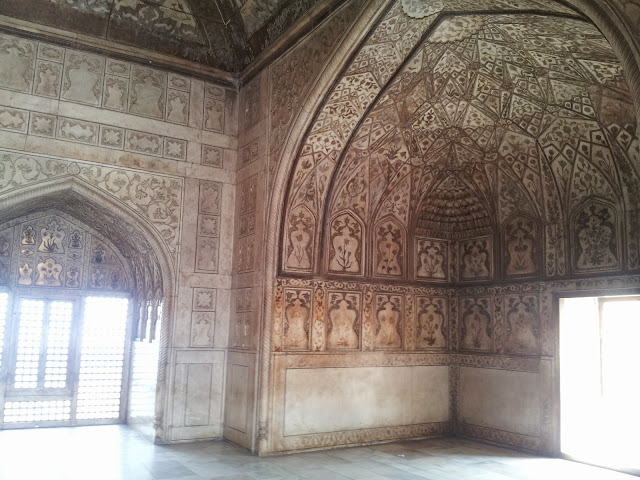After agra we got on another train to varanasi...which turned into 20hrs on the train! ! :p but we had a lovely quiet guest houae booked with a great little courtyard garden space. It's amazing how a little green can make such a huge difference when you dont have it for so long.
Varanasi is a smallish city along the banks of the holy river Ganga. Im not sure how many people know already, but the Ganga has actually been proven to have a microbial uniqueness with higher than normal oxygen levels which actually maintains a "cleanliness" to it....despite the obvious uncleaniness it is subjected to every day. Not only is the water severely littered with the usual garbage, but it is also the place to bathe and perform morning puja, the final resting place of the cremated bodies, the bath for the cows, a toilet, and a swimming pool. Truthfully, its not the most inviting water, despite knowing the science.
However.... the morning and evening pujas to shiva (creator god) are colourful and somewhat inspiring. The candles and flowers in the water are even pretty. I tried to imagine what the opposite banks would be like during the MASSIVE holy festival, where tens of thousands of pilgrims cram into a very small looking place for a chance to dunk in the river. But I know my imagination doesn't even come close.
We took both a sunrise and evening boat ride along the river...watching the activities along the ghats.
This is a city of steps. The whole river front is one set of stairs after another (ghats). We spent hours wandering up and down the ghats...watching children play cricket or badminton, holy men in bright orange wraps heading to or from temples (of which there are tons as well), laundry being washed and laid out to dry, and people just plain loitering.
Then there are the burning ghats. The place where a persons body is brought to the river, placed on a wood pyre and after holy ceremony, is burned. The ashes are then carried down to the water and washed into the river. Cremation is of course a very natural form of body disposal. And I have to say im glad most indians dont waste precious amounts of land in the overcrowded country. One of my first observations however, was how matter of fact the final process is/was. There was a part of me that like that. The person is no longer there and they are disposing of the earthly body. But there didnt seem to be much in the way of emotion....either celebrating or grieving. That makes me think that sort of thing has already happened elsewhere. There were also never any women in these families. It is something I need to learn more about because we only saw the outside. There were a few graphic moments here and in the river that took a little processing...but im not going into details here. If you're interested in the stories please just let me know and I would be happy to discuss further.
This city by far had the most cow poop in the steets out of any one we were in, and it got old fast to constantly be sidestepping it. (The rain one day didnt help either)
The one contradiction I couldn't get my head around was for such a holy city and reverence for the river etc...there seemed to be zero attempt at keeping the place remotely clean.
Which is so sad to me because it is such a cool little place. It really was an unforgettable experience.....































